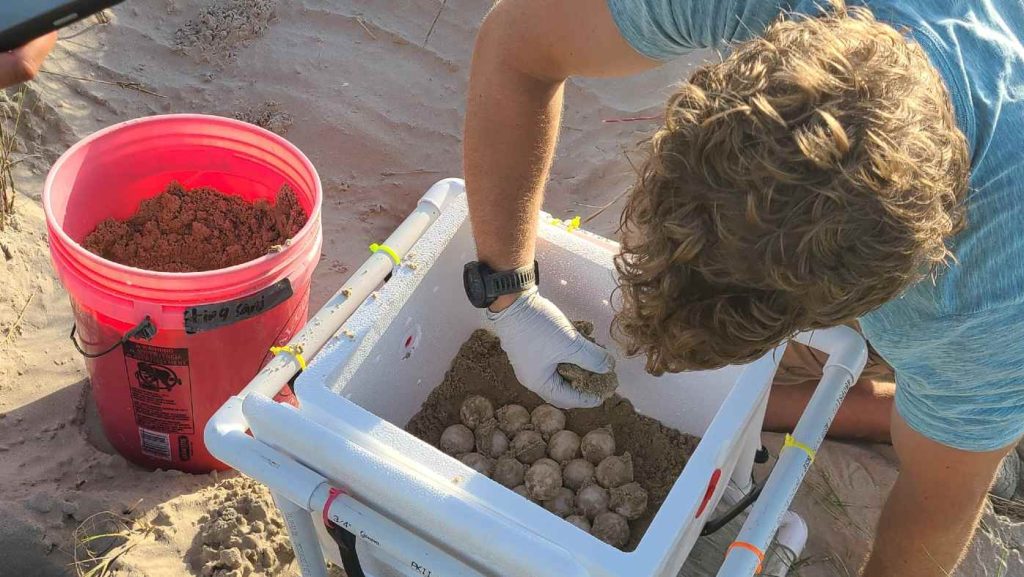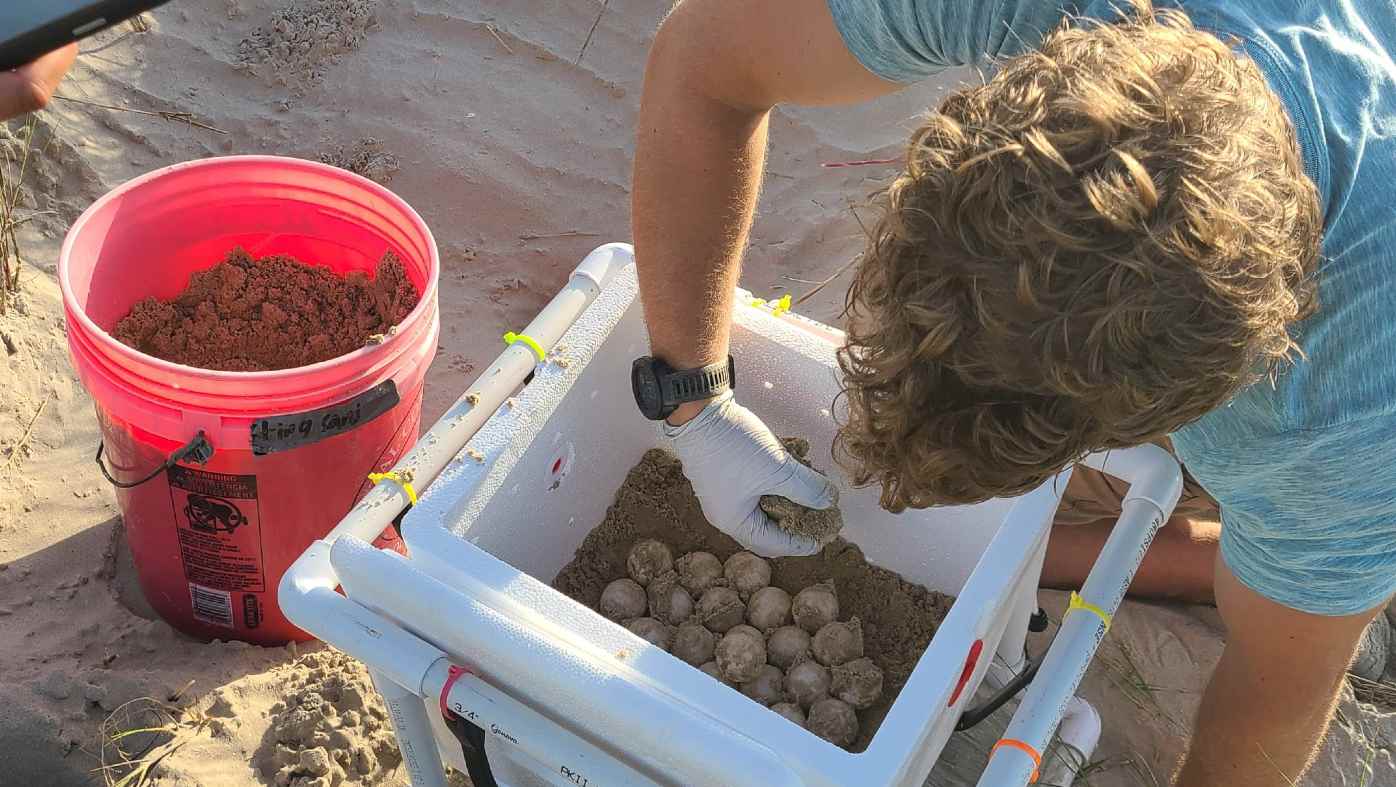
In Galveston Island State Park, a routine survey has uncovered a nest of 107 extremely precious turtle eggs belonging to a Kemp’s Ridley sea turtle’ a species listed as Critically Endangered, it is the most at-risk sea turtle on the globe.
It’s been a long, lonely decade for Texas A&M’s Sea Turtle Patrol; they haven’t found a Lone Star State turtle nest since 2012. The exhilarating discovery ended in mid-May when the eggs were transported to an incubation center, where there chances of survival raise from a pittance to a near-certainty.
Kemp’s Ridley sea turtle is a smoother, smaller turtle than more widely-known species like the Green, Loggerhead, or Hawksbill sea turtles. It’s one of just two members of the genus Lepidochelys and has been on the Earth for around 160 million years in its current form.
Widely dispersed around Mexico, in the U.S. they have been found only in Texas. In 1947, aerial surveys recorded on the beaches of Rancho Nuevo, Mexico, confirmed that this species used to come ashore by the tens of thousands but catastrophic population lost followed.
“A lot of nesting habitat for the Kemp’s Ridley has been lost to storms, high tide and predation, which is why it is important to transport these nests to an environment where they have the best chance for survival into adulthood,” said Christopher Marshall, Professor of Marine Biology at Texas A&M University at Galveston and Director for the Gulf Center for Sea Turtle Research.
RELATED: Rare Turtles Known For Their Permanent Smiles Saved From Extinction in Myanmar
Conservation efforts were already focused on restoring this marine reptile to its former hordes by 1980, and indeed by the 2000s, 10,000 individuals were recorded nesting on Padre Island National Seashore.
Two major declines in population followed, and by 2014 the number of nests found each year on Padre Island fell by 45%. On Galveston Island, they disappeared all together.
Conservation efforts are ongoing, with Smithsonian reporting that around 5,500 individuals nest on the beaches of Mexico, and 55 nest in Texas. Returns to old breeding haunts is a solid sign of population recovery, and hopefully A&M’s Turtle Patrol won’t have to wait another ten years to find the next nest.
(SLOWLY) Share This Story With All Your Nature-Loving Chums…





















Praying for your strong come-back & for humans to remember what RESPECT of Nature is. Fingers crossed.